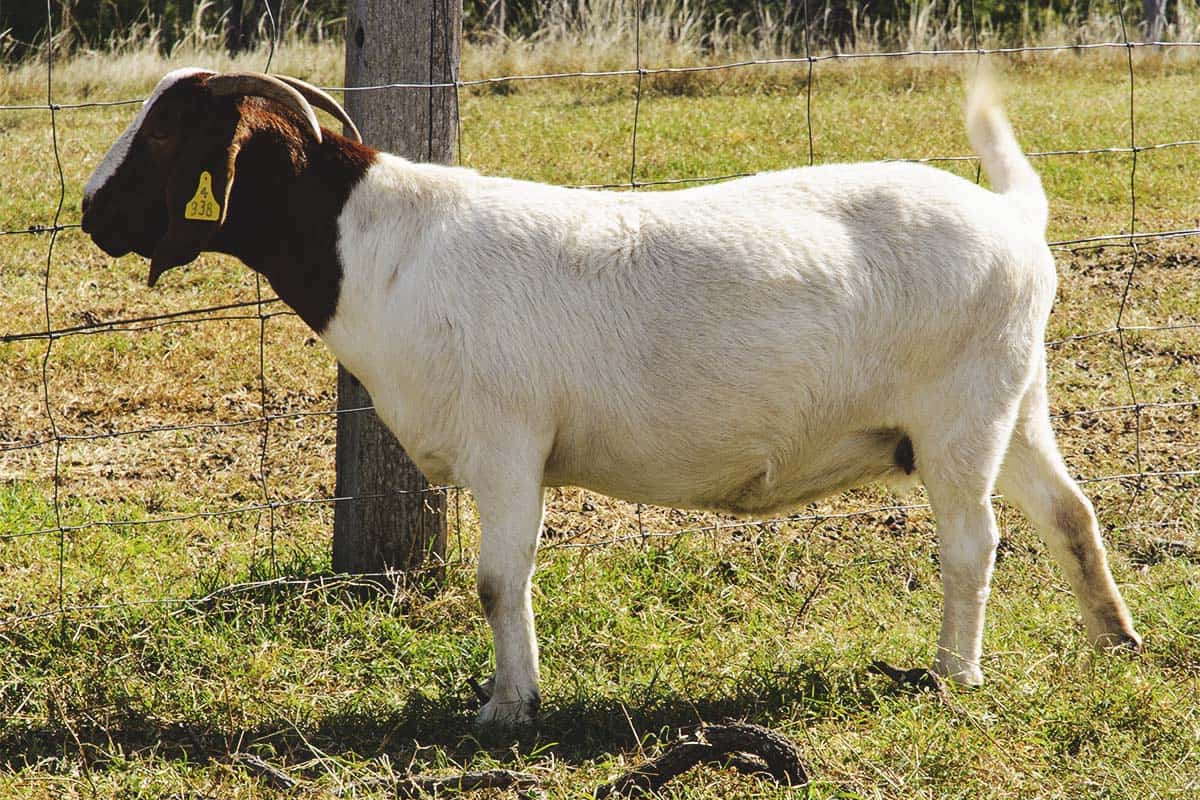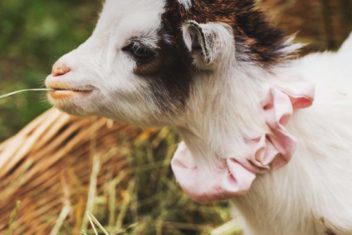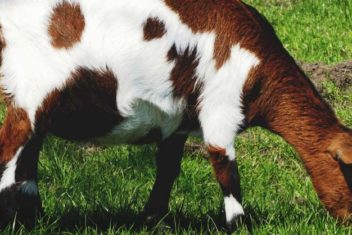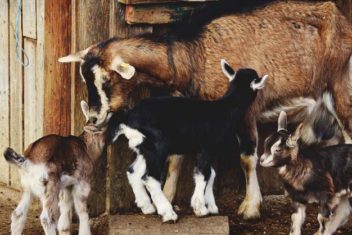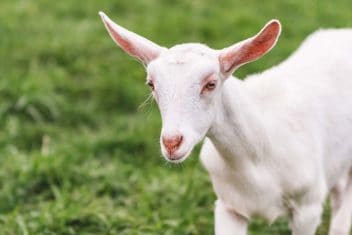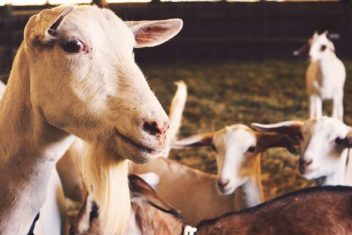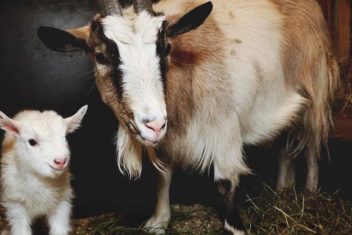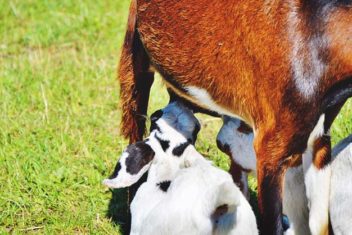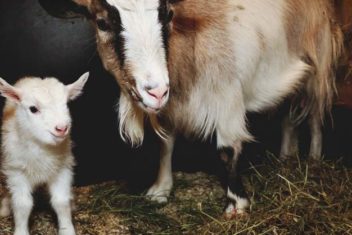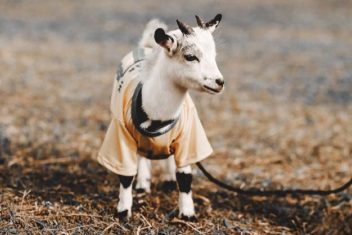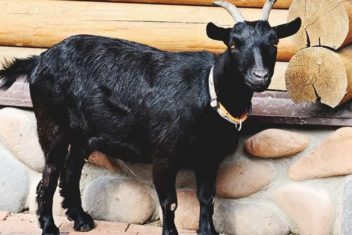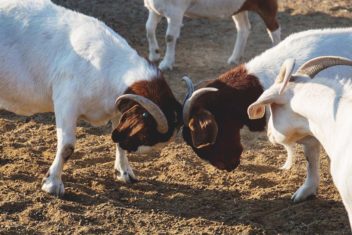There’s no better time to get into raising meat goats for profit than now. Trends for the consumption of this lean red meat are rapidly on the rise, and there’s no end in sight.
Supply and demand in the United States are at an all-time high, with the supply only a fraction of the demand. And while goat meat is consumed regularly throughout the world, it is just starting to take off in the US.
Ethnic populations, religious groups, homesteaders, and fine-dining establishments are all fighting over the little goat meat that’s produced in the USA.
And while commercial operations are slowly on the rise, there’s plenty of room for newbies to get in on this noble endeavor.
Sold on meat goats? Here’s what you need to know:
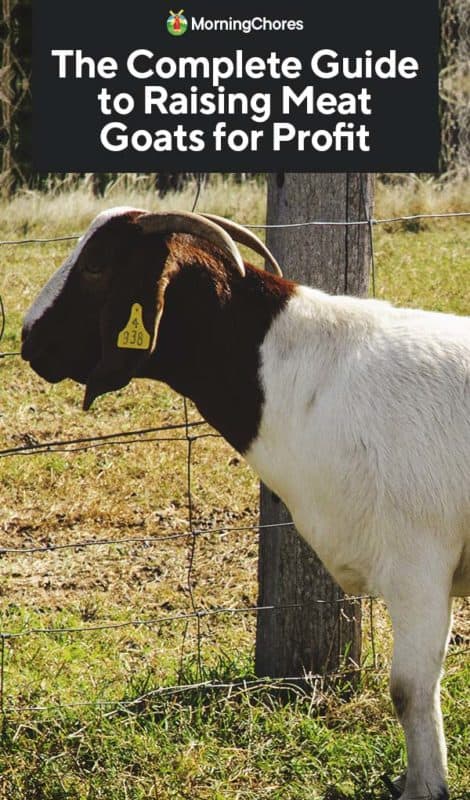
Selecting your Meat Goat Breed
Selecting the right breed of meat goat isn’t very complicated in North America, mostly because the selection is quite small. Boer goats are the most popular, but the Kiko and the Kalahari Red are both close behind due to their similar stature and ability to grow rapidly.
While many meat goat farmers are sold on one particular breed, others aren’t as dedicated to the idea of breeding within breeds. Instead, farmers choose to cross-breed, and select bucks and does that have qualities they hope to exemplify in the offspring.
For example, you may see percentage goats for sale. These are goats that are cross-bred or have a specific percentage of a certain breed.
It’s a popular choice to breed a stout, boxy, Boer buck to a tall, leggy, dairy goat doe that has proven to be a good mother. The desired result is a goat that is taller than that of a Boer goat but maintains the meat production qualities.
Feeding Your Meat Goats
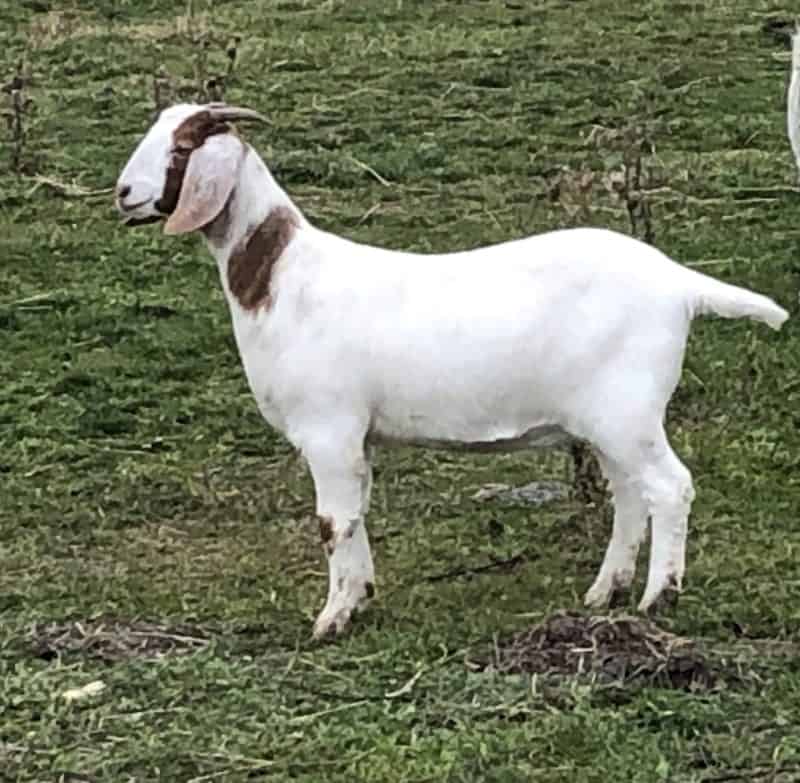
As meat goats grow in popularity, familiar pet food brand names have begun formulating goat-specific feeds. Some are good and some are just so-so.
Many goat breeds are hardy, and they thrive without any supplements if the pasture has plenty of grasses and legumes. However, if winters are cold or hay stores aren’t leafy and green, protein pellets must be used.
Read our guide on how to get your goats ready for winter for more information on winter feeding.
Option 1 – Feeding Meat Goats Naturally
On our goat farm, we opt to raise our meat goats as naturally as possible. This means plenty of roughage, free choice browsing, and pasture rotation.
Where I live in Wisconsin, during the summer my goats enjoy a pasture full of everything from timothy grass and alfalfa to the all-time goat favorite, burdock. They need nothing more than their pasture, and maybe some mineral supplements (which often go untouched).
If we’ve had a rough summer full of rain and poor hay harvesting, I will inevitably need to supplement my goats with commercial feeds to keep weight on them and provide the nutrition does need to have a healthy pregnancy.
I avoid having to feed commercial feeds at all costs. It’s expensive, cuts into profit margins, and makes goats crazy.
I’m not kidding! (ok, no pun intended). Goats on sweet feeds are loud, bossy, and pushy. It’s all they care about, and some will go off of hay or pasture altogether.
On the other hand, I expect my goats to lose a little weight over winter. I don’t show them at fairs so it’s not a big deal to me—and they will regain weight during the summer. The important thing is, they are still happy.
How do I know?
Because they are quiet.
Option 2 – Feeding for High-Production Meat Operation
All this to turn around and say that if you are raising for fast production, and are looking to get into a high-performing meat operation, you will need to pump your goats with supplemental feeds. There’s no way around it.
If you don’t have the pasture or space for goats to range naturally, high-quality horse hay (which usually means leafy alfalfa hay) will do just fine with the addition of a protein supplement.
You can purchase Kid Starter grain, Grower Grain, and Finishing Grain. However, I know plenty of farmers who make their own mixes (through trial-and-error) as well.
But if you’re like me and you want to do it naturally, and are ok with how goats grow naturally, you’ll be fine with good quality pasture and hay.
And I promise you, they’ll still sell, and you’ll still make a profit…probably more so than if you were feeding tons of sweet feed.
Harvesting Meat Goats
Meat goats are usually breeds that grow quickly. This means less time feeding young goats before sending them to the butcher.
Growth Rate
The goat kids tend to gain the most weight while they are on the doe, still nursing. Amazingly, some well-bred Boer goat kids can gain ½lb a day during their first few months of life.
What Age
It’s best to shoot for a certain weight for harvesting your meat goats rather than an age. Generally, the market would like to see 80 lbs live weight. This is the perfect weight because the meat is tender and lean due to the age of the goat. Typically, the sweet spot is between 6-7 months of age.
And as you can see, you’d barely be feeding that young goat since it’s spending much of that time with the well-fed doe.
Delicious Goat Meat Cuts

Goat meat is tender, juicy, lean, and has a mild flavor. It is quite similar to beef, and contrary to popular belief, it is not gamey in flavor. And…it smells amazing while cooking.
Goat meat can be roasted, grilled, sauteed, made into sausage or even stew. In truth, it’s very versatile and can be a leaner alternative to beef.
But when it comes time to chose your cuts of goat meat, where do you begin?
Here are the most desirable cuts of goat meat to try in your next recipe:
- Neck Chops, Rosette, or Roast
- Shoulder
- Rib rack
- Loin chops, or tenderloin
- Leg mini-roasts
- Shank
- Flank
- Breast
The possibilities are endless and often you can cook goatmeat cuts similar to your favorite beef cuts, but to make things easier we have a great selection of goat meat recipes for you to try.
So between the culinary perks and the profit possibilities, raising meat goats is a win-win decision for those looking for an easy way to get into farming.
